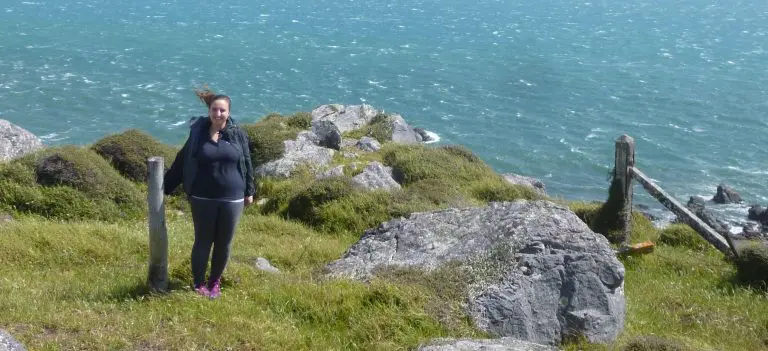A new focus for NZ? Understanding methane
Everyone knows that lowering our carbon dioxide emissions is the best way the world can of mitigate global warming, and it is true. Carbon dioxide is the single biggest driver of climate change and it has a very long life span; every bit we emit now we will be accountable for in the future. New Zealand however is unique in the fact that our greenhouse gas footprint also has a dominant portion of methane.
Methane has a much higher global warming potential than carbon dioxide. Therefore there is debate as to which kind of mitigation strategy is best. Whether it is a comprehensive multi-gas approach with an added focus on methane reduction, or an immediate focus on carbon dioxide and other long-lived gases reduction and then switching to an effort to reduce methane and other short-lived gases only once carbon dioxide is decreasing.

Figure One: NZ’s greenhouse gas emissions profile (MFE, 2006)
As you can see New Zealand’s emissions come from two main sources, energy and agriculture. This is not surprising given our designation as a primary producing country. This economic perspective is something that has to be balanced when considering the costs and benefits to mitigating our methane levels.

Figure Two: Radiative forcing contrast between carbon dioxide and methane
Methane possesses a much higher degree of radiative forcing than carbon dioxide, as can be seen in Figure Two. A higher degree of radiative forcing and the more the troposphere is forced to radiate back to earth and increase temperatures as a result. This is factored into what’s called the ‘Global Warming Potential’ or GWP. In simple terms it describes the potential for global warming in terms of different gases. Carbon dioxide is the reference point with a GWP of 1, in contrast to methane which over 20 year horizon has a GWP of 86.
If New Zealand wants to have the greatest reduction of the radiative effects of our greenhouse gas emissions in the short term, methane may be where we need to be focusing. Mitigating methane alongside carbon dioxide in the short term, a gas which has a relatively short lifetime, could also then allow us to wholly focus our efforts on the far more long term enhanced radiative threat that carbon dioxide poses.
The alternative view is that because it is uncontentious that carbon dioxide emissions have to decline to zero in order for our climate to stabilise, it needs to be our first priority. If methane emissions plateued then it is likely that its concentrations and effect on global temperature would stabilise over the course of the next few decades. In contrast, the concentrations of long lived gases such as carbon dioxide and nitrous oxide and their warming effects already will last for a hundred, if not thousands of years.
What the general public can take from this debate is that it is hugely important that we mitigate any and all greenhouse gases as much as we can as they all can have huge consequences for our future. While it’s up to scientists and policy makers to determine which gases should have priority in a mitigation strategy, it’s important for the public to put pressure on the government to make sure that whatever policy adopted reflects the urgency with which these greenhouse gas mitigation measures have to be implemented further.
How do we go about reducing methane?
Agriculture is the focus of reducing New Zealand’s methane emissions, so much so that we have our own New Zealand Agricultural Greenhouse Gas Research Centre. NIWA also work collaboratively with AgResearch and Landcare Research in order to find solutions to reduce methane in pastoral sheep and dairy farming. From research on the animals methane producing microbiology to optimal feeds and vaccinations, the work that is being undertaken is of vital importance to New Zealand’s future.
But also,
NIWA scientist Dr Hinrich Schaefer has been studying the isotopic signatures that make up methane. Schaefer found that globally, the increase in methane post 2006 has agricultural sources as opposed to fossil fuel sources which were the dominant source pre 2000 (see Figure Three below). This indicates that it is essential for managing future emissions to better understand the linkages between agriculture and methane, whether it’s pastoral farming in New Zealand or rice paddies in South East Asia.

Figure Three: Methane measured at Baring Head (New Zealand: NIWA)
Mitigating the methane producing effects of agriculture is thus of global significance beyond New Zealand and will likely play an important role in our mitigation toolkit in future. With a better understanding of the composition of our greenhouse gas emissions and of the different roles that carbon dioxide and methane play in the global warming of our atmosphere we can have better climate change policy that’s backed by science.
For more on this debate see:
http://motu-www.motu.org.nz/wpapers/16_17.pdf
http://www.pce.parliament.nz/publications/climate-…
For more on methane in New Zealand see:
http://www.agresearch.co.nz/news/shortlist-of-five…
http://www.landcareresearch.co.nz/science/greenhou…
http://www.nzagrc.org.nz/methane.html
For more on methane globally see:

Injy Johnstone
BLAKE NIWA Ambassador 2016


